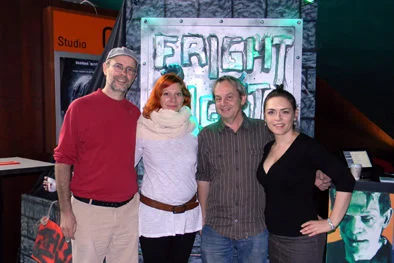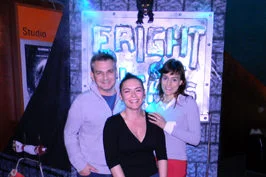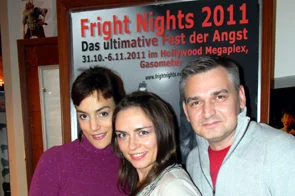The Fright Nights Horror Film Festival
Our Philosophy
„Fright Nights – The Ultimate Festival of Fear“ is a gruesome horror film festival that is unique in Austria. The event was founded in 2005 by Heinz Olbrich, initially as a retroperspective festival in Carinthia.
The idea behind it: A colorful mix of independent and professional productions, international and national films, feature-length films, short films and amateur productions all about the „horror“ genre. The festival can now look back on submissions from over 30 countries worldwide and offers creative filmmakers a big stage. The principle of the horror film festival in Pasching is to give all productions a chance, regardless of their own taste, and to put no- or low-budget films on an equal footing with productions with a budget. All information about the annual Call for Entries can be found here.
Between 2005 and 2013, the festival was held at various locations and was able to present 300 film productions on the big screen.
A very special trophy awaits the winners in the various categories: the Silver Hand.
Our Horror Awards
The Silver Hand
The Silver Hand has been awarded at the Fright Nights Horror Film Festival Pasching since 2006. With this award, the jury honors film productions from the horror genre in various categories. The hallmark of these statuettes is that each sculpture awarded is unique and made by hand. The idea was conceived by festival founder Heinz Olbrich in collaboration with the renowned artist Claudia Rindler, herself a former neighbor and collaborator of the legendary Swiss artist H.R. Giger. Since 2006, the Silver Hand has annually been designed by different artists, who thus pour their own creative style into the trophy of the Fright Nights Horror Film Festival and make each horror award a unique phenomenon. In 2021, Carinthian artist Manuela Jürgens designed the statuettes that now adorn the filmmakers‘ trophy cases in Mexico, Spain, Germany, France and Switzerland. In 2022, we were able to win the renowned artist Fritz Russ to design the Silver Hand. In 2023, Marco Jurak, a gifted mask carver from Carinthia, has sculpted the Silver Hand.
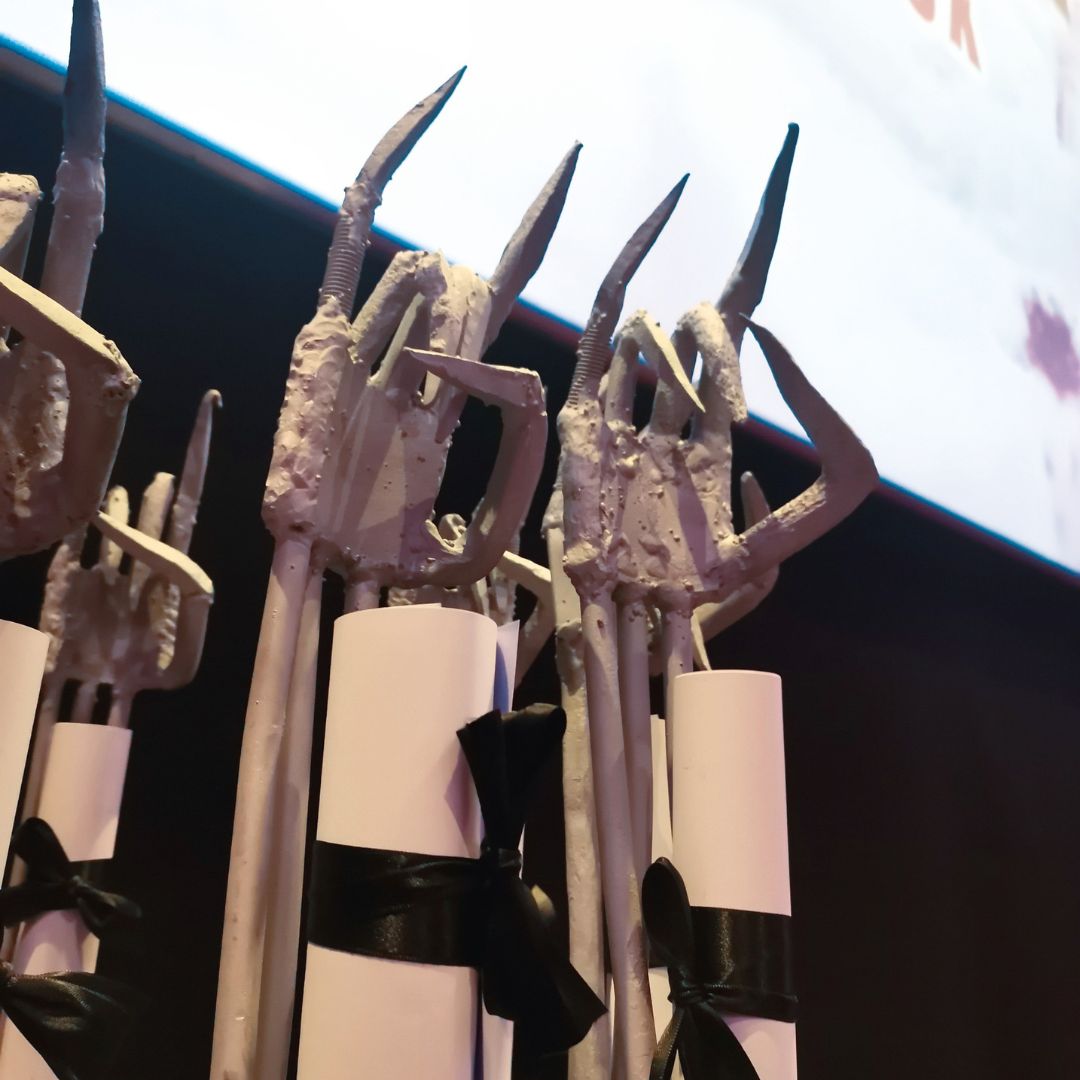
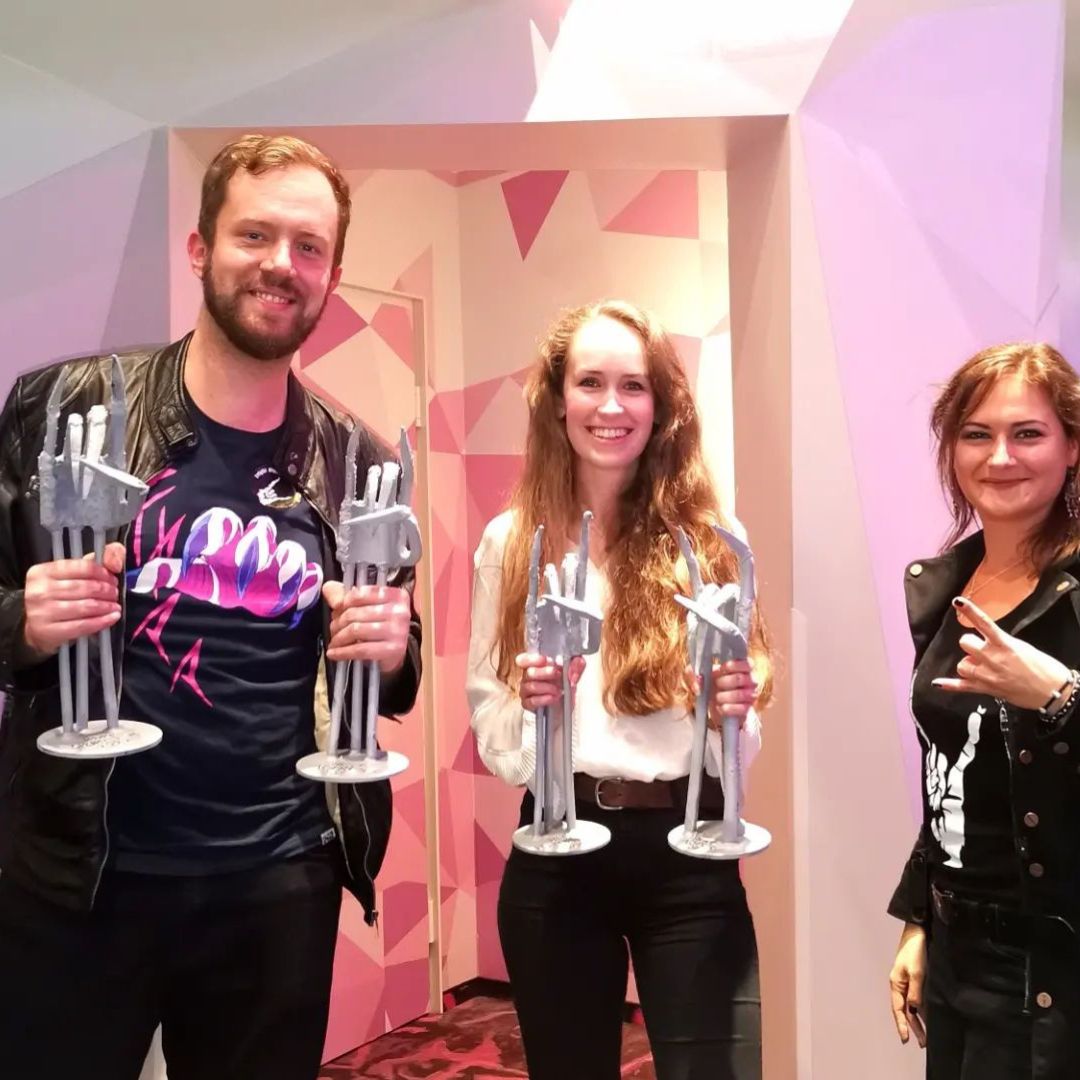
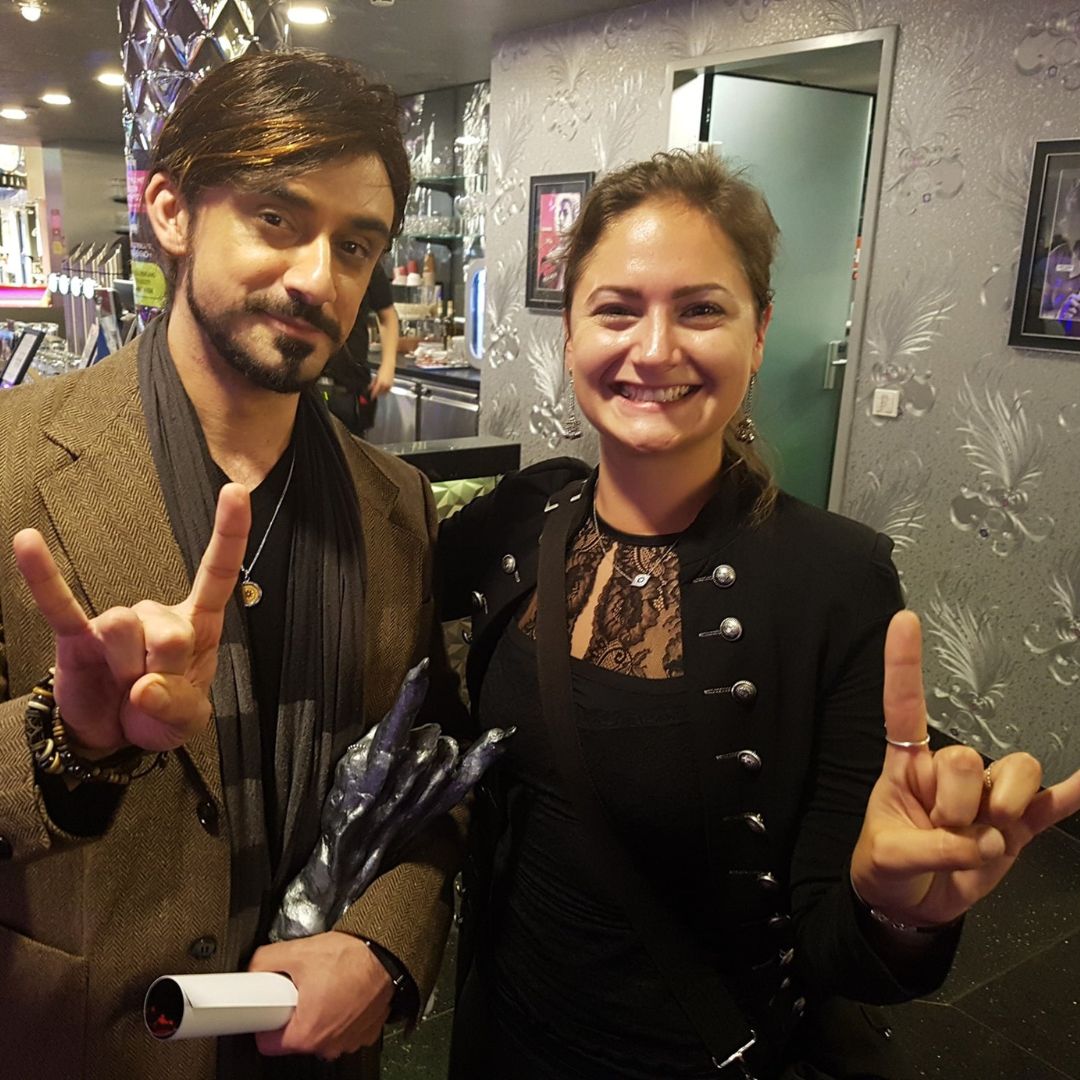

The Silver Hand in 6 categories
The Silver Hand is awarded annually by a selected jury of experts in the following categories:
Best Feature Film
Films of 60 minutes or more fall into the category „feature-length film“ and can be judged by the expert jury after successful submission to acceptance by the festival.
Best Short Film
Films up to 30 minutes will be screened by our Fright Nights jury after submission. We are looking for creative and innovative horror short films.
Trash Award
The trash film is a special film category with unusual staging, the use of clichés and exaggerations. This often results in great ingenuity and is highly valued as an art form.
Best Actor
The „Best Actor“ category recognizes male actors who have delivered outstanding performances in their roles. The award recognizes their acting skills and their talent for expressing the emotions and characters of their characters in a unique way.
Best Actress
The „Best Actress“ category honors female performers who have impressed with their outstanding acting skills and talent. The award recognizes their ability to portray the emotions and personalities of their characters in a unique way, delivering an unforgettable performance.
Best Mutilation Scene
As the name suggests, the prize for the „Best Mutilation Scene“ is awarded to the scene that stands out due to its special creative or technical realization and its disturbing effect on the audience.
The history of the horror film festival in Pasching
Fright Nights – The Ultimate Festival of Fear“ was founded by Heinz Olbrich back in 2005. At the beginning, the intention was to hold a retrospective festival. The main aim was to show films that had not been shown on the big screen for a long time. Copies of old 35mm reels were therefore brought back to life.
However, it soon became clear that the audience was particularly enthusiastic about the German and Austrian amateur and independent productions. The idea of a competition festival was therefore born just one year later.
The first venue was the Pörtschach cinema, which, however, was to be demolished. So the organizers chose a very special location: the torture museum at Sommeregg Castle in Seeboden. In this perfect horror setting, the films were no longer projected from a 35 mm master, but onto the wall using a projector. However, the gruesome backdrop had one disadvantage: the location was anything but easily accessible and so the organizers moved the event to the Volxhalle in Klagenfurt in 2008.
In 2010, the horror film festival was then brought to Vienna and a little later to the Hollywood Megaplex Gasometer.
Austria’s largest IMAX cinema has been the location of choice since 2017. Since then, filmmakers have been vying for the silver hand at the Hollywood Megaplex PlusCity cinema in Pasching. The horror film festival in Pasching is now one of the most popular cultural events in the area and attracts many horror fans and film lovers year after year.
Since 2020, cultural manager and horror film lover Chiara Kamnik has taken over the management and organization of the Fright Nights horror film festival. It is very important to her to promote independent productions, offer them a stage and bring filmmakers and horror film-loving audiences from all over the world together in one place to exchange ideas.
The Hollywood Megaplex PlusCity
The roots of the Hollywood Megaplex go back to 1959, when the pioneering Metropol cinema in Innsbruck was opened by Ingrid Hueber’s father, Ferdinand Purner, which set new standards even then. In 1995, Heinz and Ingrid Hueber built the Hollywood Megaplex in Linz-Pasching. Since 1997, the family business has expanded to St. Pölten and Vienna. Hollywood Megaplex was the first cinema in Austria to bring 3D to the big screen and conquered the mobile market in 2011 with a cinema app for iOS and Android. In 2013, Hollywood Megaplex held a market share of 11 percent in Austria and has welcomed over 34 million moviegoers across Austria since 1995.
Photos © Martin Steinkellner
